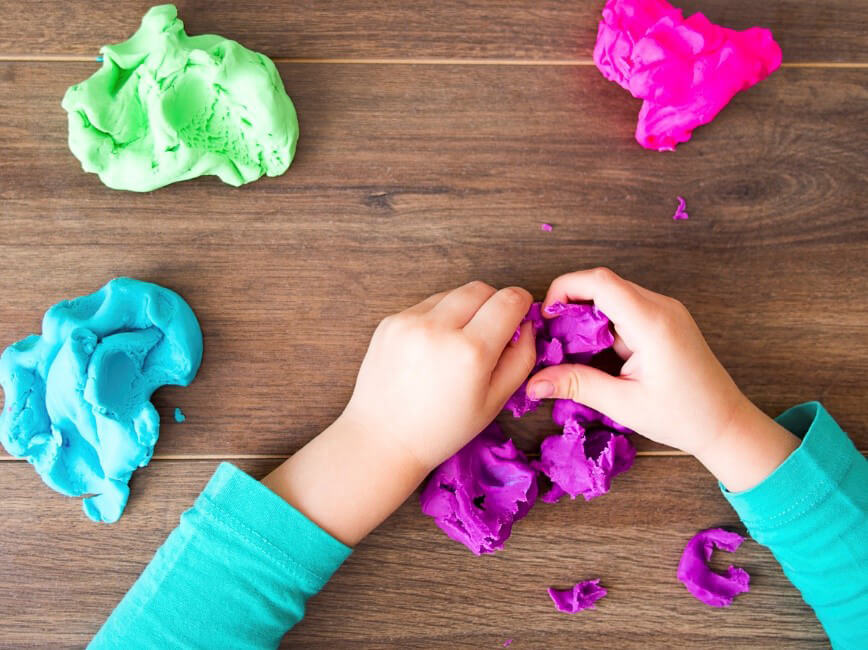
When it comes to kid-friendly fun, Jewish holidays can’t be beat. Children dance on Simchat Torah, plant trees on Tu B’Shevat, make s’mores on Lag B’Omer and stay up all night with ice cream on Shavuot. And of course, no Jewish holiday can compete with Purim when it comes to kid-friendly revelry. There’s dress up, music, noise-makers, baking (and giving) treats, plays or purimspiels, and parties a plenty. After all, when you’re remembering the triumph of an entire people, you deserve to party.
And while Purim is a big celebration, it’s also a very noisy – and sometimes crowded holiday. Most purimspiels and costume parades are loud and raucous. They’re supposed to be – the point of using groggers (noise makers) is to drown out the sound of Haman, the evil villain of the Purim story, and his name. But for children—and some grown-ups—with sensory issues, Purim can feel like less of a party.
Making others feel welcome and respecting differences are both important mitzvot or commandments of Judaism. And Purim provides a great occasion to embrace differences and brainstorm inclusive and fun ways to make your Purim celebrations accessible to everyone in your community.
Here are some tips for creating a more sensory-friendly Purim.
Related: How to Make Playdates Fun For Everyone
Pick an Accessible Venue

When you’re selecting your venue for your Purim celebrations, take note of whether there are stairs or steps or an accessible entrance for people with mobility issues. As you set up your RSVPs and send out invites, include a small paragraph with information about the venue’s accessibility. An example would be: “There are four steps up from the sidewalk in to the front door and a step down in to the auditorium. There is a separate, accessible entrance near the parking lot on the south west side of the building.”
Cue the Boos

Offer visual cues with signs or a projector when Haman’s name is about to be said. Sometimes the issue with loud noises is more about the surprise than the noise itself. Even a little bit of advanced notice can help prepare children before all the screaming and rattling starts. You can also offer a basket of noise cancelling headphones for attendees to borrow during the festivities.
Set up a Quiet Area

Make sure there’s an area nearby where children can take a break from the noise and chaos, but still feel part of the celebration. Sometimes adults need this too! If you’re able to, try to set up a separate quiet area for kids as well as a nursing room for parents and babies.
Use Sign Language

Consider learning a few signs to accompany your purimspiel or welcome ceremony. Hiring an ASL interpreter also ensures that deaf and hearing impaired grown-ups in the audience will be able to assist their own children during louder or more intense parts of the story.
Offer Tactile Options

Did you make Hamantaschen? Have some leftover dough on standby for squishing. Or for another tactile experience, children can make noiseless groggers or simply use those noise-generating craft materials (typically dry beans or rice) for other purposes. Since sitting still can also be tricky for some kids (and grown-ups too), you can also set up a craft table on the side or place bins of chenille stems (also known as pipe cleaners) around the venue. This way attendees who need to can fidget and keep their hands busy.
Skip the Snacks
A lot of us associate celebrations with food, but for people with severe food allergies or sensitivities, a refreshment table can feel more like a roadblock than a welcome. If you do opt to host snacks, find allergen-safe options using packaged labels and food allergy guides. If you’re able to skip snacks altogether, you can also still make hamanataschen from other materials. Create big interactive sensory hamantaschen using sheets and pillows or other materials that kids can sit on during programs. You can also make giant decorative hamanataschen from paper too.
Host a Q&A for Kids

Host an open session before Purim where kids and parents can come ask questions about what’s going to happen. Give clear times for programs so that families feel comfortable attending some portions and not others. For example, if there’s a costume parade, make that its own special event so that families can skip it if necessary.
More
The 2019 Quick Guide to Celebrating Purim With Kids
5 Tips For Making Playdates Fun for All Children
What is Jewish About Respecting Differences?
The Purim Story for Kids
Looking for more Purim activities?
Visit the PJ Library Purim hub
March 18, 2019